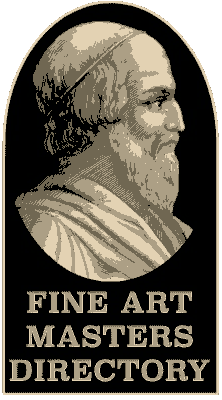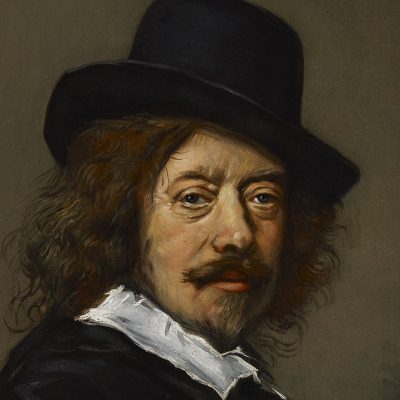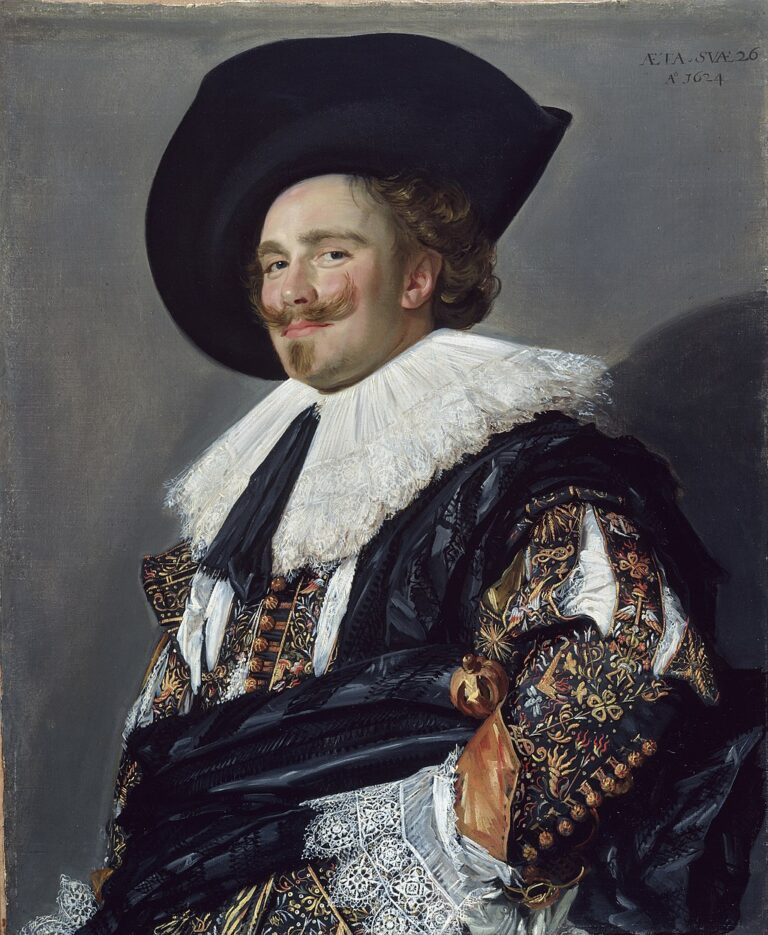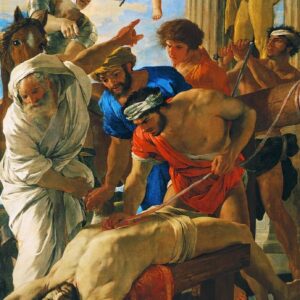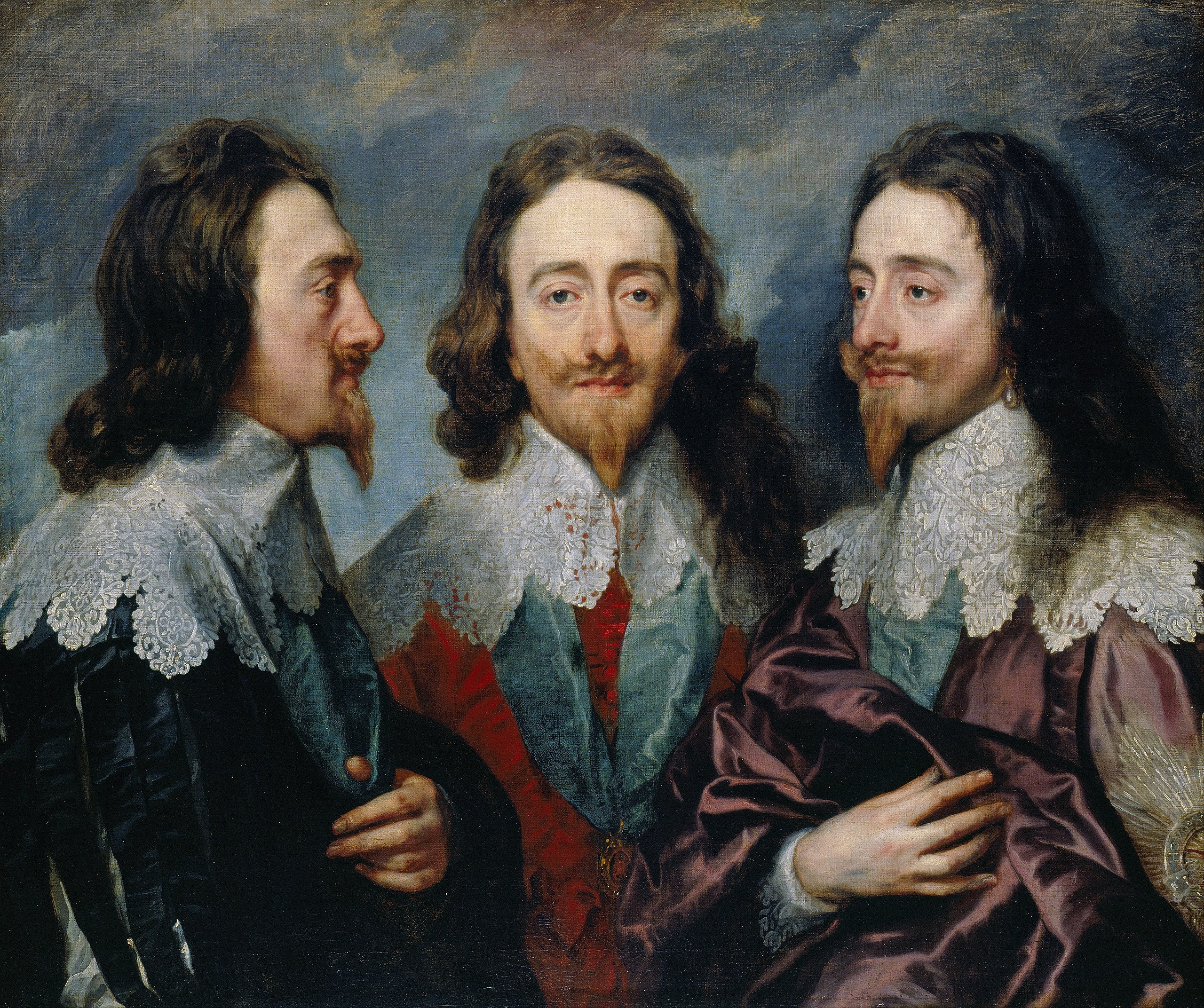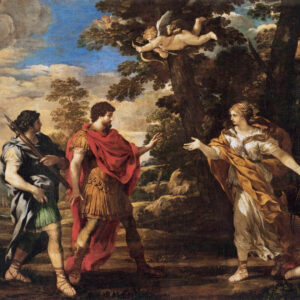Frans Hals the Elder 1582 – 26 August 1666) was a Dutch Golden Age painter, normally of portraits, who lived and worked in Haarlem.
Hals played an important role in the evolution of 17th-century group portraiture. He is known for his loose painterly brushwork.
Biography
Hals was born in 1582 or 1583 in Antwerp, then in the Spanish Netherlands, as the son of cloth merchant Franchois Fransz Hals van Mechelen (c. 1542–1610) and his second wife Adriaentje van Geertenryck.[5] Like many, Hals’s parents fled during[6] the Fall of Antwerp (1584–1585) from the south to Haarlem in the new Dutch Republic in the north, where he lived for the remainder of his life. Hals studied under Flemish émigré Karel van Mander,[5][7] whose Mannerist influence, however, is barely noticeable in Hals’s work.
In 1610, Hals became a member of the Haarlem Guild of Saint Luke, and he started to earn money as an art restorer for the city council. He worked on their large art collection that Karel van Mander had described in his Schilderboeck (“Painter’s Book”) published in Haarlem in 1604. The most notable of these were the works of Geertgen tot Sint Jans, Jan van Scorel, and Jan Mostaert that hung in the St John’s Church in Haarlem. The restoration work was paid for by the city of Haarlem, since all Catholic religious art had been confiscated after the satisfactie van Haarlem had been reversed in 1578, which had formerly given Catholics equal rights to Protestants. However, the entire collection of paintings was not formally possessed by the city council until 1625, after the city fathers had decided which paintings were suitable for the city hall. The remaining art that was considered too “Roman Catholic” was sold to Cornelis Claesz van Wieringen, a fellow guild member, on the condition that he remove it from the city. It was in this cultural context that Hals began his career in portraiture, since the market had disappeared for religious themes.
The earliest known example of Hals’s art is the portrait of Jacobus Zaffius (1611). His ‘breakthrough’ came with the life-sized group portrait The Banquet of the Officers of the St George Militia Company in 1616. His most noted portrait today is the one of René Descartes which he made in 1649.
Statue of Frans Hals in Florapark, Haarlem
Frans Hals married his first wife Anneke Harmensdochter around 1610. Frans was of Catholic birth, however, so their marriage was recorded in the city hall and not in church.[8] Unfortunately, the exact date is unknown because the older marriage records of the Haarlem city hall before 1688 have not been preserved.[8] Anneke was born 2 January 1590 as the daughter of bleacher Harmen Dircksz and Pietertje Claesdr Ghijblant, and her maternal grandfather, linen producer Claes Ghijblant of Spaarne 42, bequeathed the couple the grave in St Bavo’s Church (Grote Kerk) where both are buried, though Frans took over 40 years to join his first wife there.[8] Anneke died in 1615, shortly after the birth of their third child and, of the three, Harmen survived infancy and one had died before Hals’s second marriage.[8] As biographer Seymour Slive has pointed out, older stories of Hals abusing his first wife were confused with another Haarlem resident of the same name. Indeed, at the time of these charges, the artist had no wife to mistreat, as Anneke had died in May 1615.[9] Similarly, historical accounts of Hals’s propensity for drink have been largely based on embellished anecdotes of his early biographers, namely Arnold Houbraken, with no direct evidence existing documenting such. After his first wife died, Hals took on the young daughter of a fishmonger to look after his children and, in 1617, he married Lysbeth Reyniers. They married in Spaarndam, a small village outside the banns of Haarlem, because she was already 8 months pregnant. Hals was a devoted father, and they went on to have eight children.[10]
Contemporaries such as Rembrandt moved their households according to the caprices of their patrons, but Hals remained in Haarlem and insisted that his customers come to him. According to the Haarlem archives, a schutterstuk that Hals started in Amsterdam was finished by Pieter Codde because Hals refused to paint in Amsterdam, insisting that the militiamen come to Haarlem to sit for their portraits. For this reason, we can be sure that all sitters were either from Haarlem or were visiting Haarlem when they had their portraits made.
Hals’s work was in demand through much of his life, but he lived so long that he eventually went out of style as a painter and experienced financial difficulties. In addition to his painting, he worked as a restorer, art dealer, and art tax expert for the city councilors. His creditors took him to court several times, and he sold his belongings to settle his debt with a baker in 1652. The inventory of the property seized mentions only three mattresses and bolsters, an armoire, a table, and five pictures[11] (these were by himself, his sons, van Mander, and Maarten van Heemskerck).[12] Left destitute, he was given an annuity of 200 florins in 1664 by the municipality.[11]
The Dutch nation fought for independence during the Eighty Years’ War,[11] and Hals was a member of the local schutterij, a military guild. He included a self-portrait in his 1639 painting of the St Joris company, according to its 19th-century painting frame. (It has not been possible to confirm this.) It was not common for ordinary members to be painted, as that privilege was reserved for the officers. Hals painted the company three times. He was also a member of a local chamber of rhetoric, and in 1644 he became chairman of the Guild of St Luke.
Frans Hals died in Haarlem in 1666 and was buried in the city’s St Bavo’s Church.[13] He had been receiving a city pension, which was highly unusual and a sign of the esteem with which he was regarded. After his death, his widow applied for aid and was admitted to the local almshouse, where she later died.
